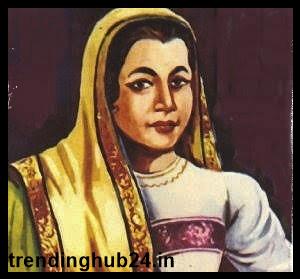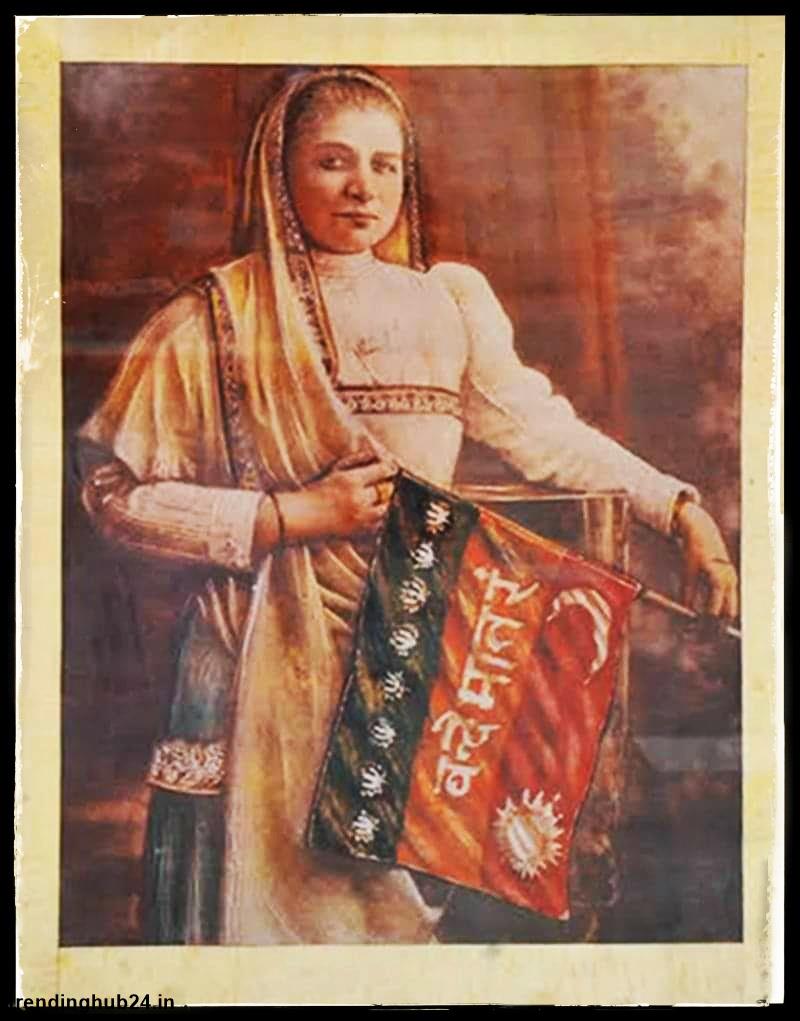Contact us for advertisement opportunities on Trending Hub24
📢 Contact Us For Advertise Here | +91 7355993756
Who is Bhikaji Cama and his complete history

Bhikaji Rustam Cama (Madam Bhikaji) was an Indian freedom fighter who hoisted the Indian flag on foreign soil for the first time in 1907.
Table of Contents
Bhikaji Rustam Cama (Madam Bhikaji) was an Indian freedom fighter who hoisted the Indian flag on foreign soil for the first time in 1907. She was an ardent independence activist as well as a pioneer for women's rights.
Bhikaji Rustom Cama is also known as the 'Mother of Indian Revolution'.
The Indian woman who hoisted the Indian flag abroad for the first time.
Four decades before India's independence, in the year 1907, for the first time, a woman hoisted the flag of India abroad.
46-year-old Parsi woman Bhikaji Cama hoisted this flag at the second 'International Socialist Congress' held in Stuttgart, Germany. This was one of the many unofficial flags created during the freedom struggle, different from today's flag of India.
Rohtak MD, who has written a book on Madam Cama. BD Yadav, a retired professor of the University, says, "Flags of the countries of all the people participating in that Congress were hoisted and there was a British flag for India, rejecting it, Bhikaji Cama made a flag of India and hoisted it there. ."
In his book, 'Madam Bhikaji Cama', Prof. Yadav says that while hoisting the flag, Bhikaji gave a powerful speech and said, "O comrades of the world, look, this is the flag of India, it represents the people of India, salute it. do it."
1907 photograph of Madam Bhikaji Cama holding the flag of India
Madam Cama was known by both the names Bhikaji and Bhikai ji.
This was the time when Bengal province in India was divided two years ago, in the year 1905, due to which a wave of nationalism ran in the country.
Mahatma Gandhi was still in South Africa, but in anger over partition, Bengali Hindus had started boycotting foreign clothes to give preference to 'Swadeshi' clothes.
#Meaning of Sun and Moon
The song 'Bande Mataram' from Bengali writer Bankim Chandra Chatterjee's book 'Anandmath' became popular among the nationalist agitators.
The flag hoisted by Bhikaji Cama had green, yellow, and red stripes. 'Bande Mataram' was also written on it.
Postal stamp issued in 1962 in memory of Madam Bhikaji Cama

The Eight lotus flowers on the green stripe featured in the flag represented the eight provinces of India.
The sun and moon were drawn on the red stripe. The sun was the symbol of Hinduism and the moon of Islam. This flag is now displayed in the Kesari Maratha Library of Pune.
After this, Madam Cama started publishing a 'revolutionary' journal named 'Bande Mataram' from Geneva. Its name continued to be printed on its masthead along with the image of the same flag that Madam Cama had hoisted.
#Flag hoisted by Madam Bhikaji Cama in 1907
Bhikaji Patel was born in 1861 into a prosperous Parsi family in Bombay (now Mumbai).
In 1885, she was married to the famous businessman Rustamji Cama. Both had very different views regarding the British rule. Rustomji Cama was a supporter of the British government and Bhikaji was an outspoken nationalist.
#Flame of freedom in Europe
Plague disease spread in Bombay in 1896 and Bhikaji Cama herself fell ill while working for help there.
She went to London in 1902 for treatment and during that time she met revolutionary leader Shyamji Krishna Varma.
Pro. Yadav says, "Bhikaji was greatly influenced by him and after recovering his health, leaving the idea of going to India, he along with other revolutionaries got involved in the work of creating international support for India's independence."
The British government kept a close watch on him. After the assassination of Lord Curzon, Madam Cama moved to Paris in the year 1909 from where she started the 'Home Rule League'.
Bhikaji Cama's popular slogan was, "India must be free; India must be a republic; India must be united."
For more than thirty years, Bhikaji Cama raised the demand for the right of independence of his country through speeches and revolutionary articles in Europe and America.
#Madam Cama V.D. Also worked with Savarkar
During this period, he worked with many revolutionaries including VD Savarkar, MPT Acharya, and Hardayal.
According to the detailed article written on Bhikaji Cama by KE Edulji, a writer who has researched many Parsi personalities, she was detained twice during the First World War and it became very difficult for her to return to India.
He was finally allowed to return to his country in 1935 on the condition of leaving nationalist work.
By this time Madam Cama had become very ill and due to deteriorating health, she died in 1936.
In 1962, the Post and Telegraph Department of India issued a postage stamp in memory of Madam Bhikaji Cama on Republic Day.
Now many roads and buildings in the country are named after him, but very few people know about his contribution to the freedom struggle.
He expressed his revolutionary ideas in his newspapers 'Vande Mataram' and 'Talwar'. Mrs. Madam Bhikaji Cama's fight was against imperialism across the world. She well understood the importance of India's independence movement, which aimed to eliminate the dominance of imperialism from the entire earth. Her colleagues considered her the 'Mother of the Indian Revolution'; Whereas the British called her a notorious woman, a dangerous revolutionary, an anarchist revolutionary, anti-British and inconsistent. Mrs. Cama had a great influence on the socialist community of Europe. This was evident when he invited European journalists to defend their patriots. She was known as the 'Great Priestess of Indian Nationalism'. Her portrait appeared alongside that of Joan of Arc in French newspapers. This was an emotional expression of the fact that Mrs.
#Madam Bhikaji Cama had a special place in the national and democratic society of Europe. An attempt was made to incorporate the sentiments and culture of different religions of the country in the flag hoisted by Bhikaji. The colors green, yellow, and red were used to represent Islam, Hinduism, and Buddhism. Also, Vande Mataram was written in the middle of it in Devanagari script.
#Bhikaji Cama raised the flag of Indian independence and the first tricolor national flag of India at the International Socialist Conference held in Germany on 22 August 1907. In that conference, he appealed to free India from British rule. A design very similar to the flag prepared by him was later adopted as the flag of India. This first tricolor national flag of India, made by Ranaji and Kamaji, is still kept safe in the house of BJP leader Rajubhai Rana (Rajendrasinh Rana), grandson of Sardar Singh Rana, in Bhavnagar, Gujarat.
